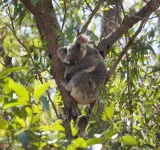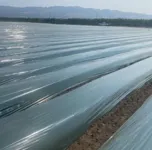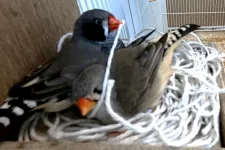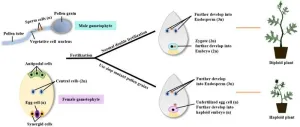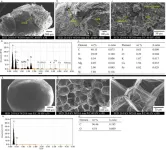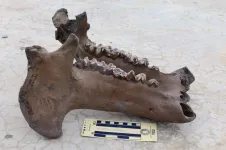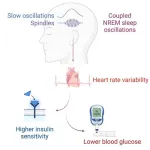(Press-News.org) Financial payments made by land developers to offset their impacts on threatened species may fall short, according to University of Queensland-led research.
Professor Jonathan Rhodes from the School of the Environment focused on koala populations in the fast-developing South East Queensland region and a government scheme which allows developers to make financial payments to compensate for environmental consequences.
“Just like when you make a financial contribution to offset your carbon emissions when purchasing a flight, developers can make a financial payment to the Queensland Government to offset their impacts on koala habitat,” Professor Rhodes said.
“These payments are then used to plant trees to restore koala habitat in offset sites elsewhere.
“But we found that when suitable places to restore koala habitat are difficult to find, the financial payments required under the Queensland Environmental Offset Policy are often insufficient to achieve its intended outcomes and this is a major problem.
“In the South East Queensland region, only 0.7 of 13.4 hectares of impacts on koala habitat offset through financial payments since 2018 so far have offset sites in place and this is concerning for the future of this beloved, endangered species.
“Unfortunately, land supply can make suitable offset sites hard to find and this pushes up the cost of delivering habitat restoration and securing those sites in the long-term can fail to guarantee sufficient gains in habitat to counterbalance losses.”
Professor Rhodes said funding from developer payments may be insufficient to buy enough offset sites for habitat restoration.
“South East Queensland is the most densely human-populated area in the state, growing from 2.4 million people in 2001 to 3.5 million people in 2016, with 5.3 million people expected by 2041,” Professor Rhodes said.
“It is also home to an enormous number of threatened species, including some of the most significant koala populations in Australia which have declined 50 to 80 per cent over the past two decades.
“This problem will become worse as the region expands and competition for land for development intensifies, making offset sites either impossible to find or more expensive to secure.”
The study mapped and modelled development in eight Local Government Areas (LGAs) within the South East Queensland Planning Region, applying ecological data and projecting anticipated development and offset outcomes.
While the researchers propose some solutions, they also call for consideration of immediate changes to the current offset policy.
“On one hand, financial payments by developers can provide flexibility for the State Government to deliver the most effective offsets to help threatened species such as koalas, but on the other hand, it’s essential that developers pay the true cost of those offsets,” Professor Rhodes said.
“Otherwise, offsets will fall short of compensating for habitat losses and species will continue to decline or taxpayers via the State Government will have to make up the shortfall in developer contributions.”
The research is published in People and Nature.
END
Developer dollars not enough to save species
2023-07-10
ELSE PRESS RELEASES FROM THIS DATE:
Strawberry fields forever? Strawberry production leaves long-term plastic pollution
2023-07-10
Researchers have found that the plastic mulch used to support the growth of Californian strawberries sheds large quantities of plastic mulch fragments. These particles have been shown to negatively impact soil qualities, casting doubt on the long-term viability of their use. The findings from the survey are likely to apply world-wide to plastic use in agricultural production.
Presenting their work at the Goldschmidt geochemistry conference in Lyon, postdoctoral researcher Dr Ekta Tiwari (from Sistla group at California Polytechnic ...
Beak shape can predict nest material use in the world’s birds, study finds
2023-07-10
The material a bird selects for its nest depends on the dimensions of its beak, according to researchers.
Using data on nest materials for nearly 6,000 species of birds, a team based at the University of Bristol and the University of St Andrews utilised random forest models, a type of machine learning algorithm, to take data from bird beaks and try to predict what nest materials that species might use.
They found a surprisingly strong correlation. Using only information on beak shape and size, they were able to correctly predict broad nest material use in 60% of species, rising to ...
Bees get week early wakeup call from warming climate
2023-07-10
Warmer springs are causing British bees to wake up earlier, a new study has found, threatening the pollination of crops such as apples and pears.
The research – which is believed to be the largest of its kind in Great Britain – found that for every 1 degree Celsius rise in temperature caused by climate change, wild bees, such as bumblebees, emerge from their nests 6.5 days earlier on average.
As spring starts earlier and bees emerge closer to the start of the year, they may lose sync with the plants on which ...
Man-made materials in nests can bring both risks and benefit for birds
2023-07-10
We all discard a huge amount of plastic and other man-made materials into the environment, and these are often picked up by birds. New research has shown that 176 bird species around the world are now known to include a wide range of anthropogenic materials in their nests. All over the world, birds are using our left-over or discarded materials. Seabirds in Australia incorporate fishing nets into their nests, ospreys in North America include baler twine, birds living in cities in South America add ...
Li Yuan 's group from Northwest A&F University has made progress in the study of watermelon haploid induction
2023-07-08
Generating haploid plants for the purpose of obtaining pure doubled haploid (DH) lines is widely recognized as one of the most efficient breeding strategies in modern agriculture. Watermelon (Citrullus lanatus), an important fruit crop known for its nutritional value and flavor, has undergone long-term artificial selection resulting in genetic narrowing. Therefore, there is an urgent need for a haploid induction system to enhance traditional breeding methods and facilitate the development of valuable pure DH lines.
In March 2023, the Plant Biotechnology Journal published an online paper titled "Production of double haploid watermelon via ...
From bad to worse: h=How micro- and meso-plastics collect heavy metals
2023-07-08
Tokyo, Japan – A team led by researchers from Tokyo Metropolitan University studied how microplastics in the environment accumulate heavy metals. As the microplastics spread, so do their toxic cargo. Focusing on polystyrene foam, they collected particles along a river running through Ulaanbaatar, Mongolia. They found significant levels of heavy metals accumulated on the particles, reflecting local land use and industries, as well as surface features like holes and biofilms which help pollutants collect.
The spread of plastic debris into the natural environment is an ecological disaster. As plastic waste makes ...
Madagascar hippos were forest dwellers
2023-07-07
Extinct dwarf hippos that once roamed Madagascar lived in forests rather than open grasslands preferred by common hippos on mainland Africa, researchers at the University of Cincinnati discovered.
The findings suggest grasslands that now cover much of the enormous island off the eastern coast of southern Africa were a relatively recent change facilitated by people rather than a natural habitat sustained in part by these famously large vegetarians.
The study was published in the journal Plants, People, Planet.
When Madagascar broke away from Africa’s mainland 150 million years ago, its plants and animals evolved in geographic isolation in the ...
New research finds deep-sleep brain waves predict blood sugar control
2023-07-07
Researchers have known that a lack of quality sleep can increase a person’s risk of diabetes. What has remained a mystery, however, is why.
Now, new findings from a team of sleep scientists at the University of California, Berkeley, are closer to an answer. The researchers have uncovered a potential mechanism in humans that explains how and why deep-sleep brain waves at night are able to regulate the body’s sensitivity to insulin, which in turn improves blood sugar control the next day.
“These synchronized brain waves act like a finger that flicks the ...
Bilateral total knee arthroplasty linked to increased complication rates
2023-07-07
July 7, 2023 – Patients undergoing bilateral total knee arthroplasty (TKA) are at an increased risk of several types of complications, as compared with matched patients undergoing unilateral TKA, reports a study in The Journal of Bone & Joint Surgery. The journal is published in the Lippincott portfolio in partnership with Wolters Kluwer.
"Patients who underwent simultaneous bilateral TKA were at higher risk of experiencing postoperative complications such ...
New center merges math, AI to push frontiers of science
2023-07-07
ITHACA, N.Y. -- With artificial intelligence poised to assist in profound scientific discoveries that will change the world, Cornell is leading a new $11.3 million center focused on human-AI collaboration that uses mathematics as a common language.
The Scientific Artificial Intelligence Center, or SciAI Center, is being launched with a grant from the Office of Naval Research and is led by Christopher J. Earls, professor of civil and environmental engineering at Cornell Engineering. Co-investigators include Nikolaos Bouklas, assistant professor ...
